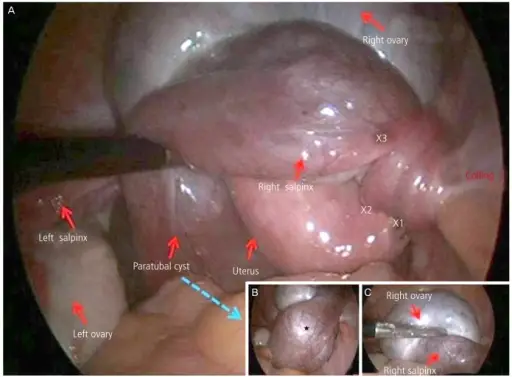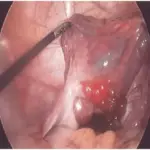Paratubal cysts are encapsulated, fluid-filled sacs which are sometimes referred to as paraovarian cysts. These cysts form near an ovary or fallopian tube, and won’t adhere to any internal organ.
What is the Pathology of Paratubal Cysts?
The pathology of paratubal cysts is:
-Etiology: The cause of paratubal cysts is mesothelium or the remnant of Müllerian duct
-Genes involved: if any just mention the genes here.
-Pathogenesis: The sequence of events that lead to paratubal cysts unknown.
-Morphology: The morphology associated with paratubal cysts shows Simple fluid filled cysts near fallopian tube.
-Histology: The histology associated with paratubal cysts shows focal papillary projections, ciliated tubal type epithelium.
How does Paratubal Cysts Present?
Patients with paratubal cysts typically females at all ages. Most common in females from 30s to 50s age. The symptoms, features, and clinical findings associated with paratubal cysts include: no symptoms but the larger cysts show symptoms of abnormal uterine bleeding, and dyspareunia, compression of the bladder, uterus or bowel, pelvic tenderness, abdominal pain.
How is Paratubal Cysts Diagnosed?
Paratubal cysts is diagnosed by: pelvic ultrasound, laparoscopy, biopsy transvaginal sonography, MRI, CT scan.
How is Paratubal Cysts Treated?
Paratubal cysts is treated by: surgery if cysts become large, laparoscopic cystectomy, Salpingectomy or Oophorectomy, medications with birth control pills.
What is the Prognosis of Paratubal Cysts?
The prognosis of paratubal cysts is good. They are benign and rarely gives rise to serous borderline tumor or even more rarely malignancy.



